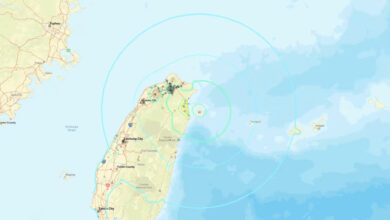
China’s economy expanded more than expected in the first three months of the year as government moves to kickstart growth helped offset weak global demand and a US trade war, data showed Wednesday.
The 6.4 percent reading was the latest in a string of figures indicating the world’s number-two economy and key driver of global growth is stabilizing after decelerating every quarter last year, though officials warned of headwinds.
“The national economy enjoyed stable performance with growing positive factors, and stronger market expectation and confidence,” said National Bureau of Statistics spokesman Mao Shengyong.
“Given slowing global economic growth and international trade, increasing international uncertainties and prominent domestic structural issues, the task of reform and development is arduous and downward pressure on the economy persists,” said Mao.
Top policymakers in Beijing last month unveiled a number of major plans to support the flagging economy with massive tax cuts, fee reductions, and financing support.
Officials pressed on with the drive to shift China to a more sustainable growth model, strengthened policies to counter the downturn and “spared no effort to put the policies into effect”, said Mao.
Beijing faces a delicate balancing act as it tries to support businesses in need of credit, without further inflating its debt balloon.
A strong March
New credit flooded into the financial system last month, with the growth of bank loans and total outstanding credit accelerating — thanks to measures to boost lending — though analysts say it will take about six months to spark a full economic turnaround.
“The better-than-expected (first quarter) figures reflect a strong March,” said Julian Evans-Pritchard of Capital Economics in a note, adding seasonal factors could have contributed to the uptick.
“With credit growth now accelerating and sentiment improving, China’s economy will bottom out before long if it hasn’t already,” he said.
The government lowered its growth target for China this year to 6.0-6.5 percent, having chalked up its slowest pace for almost three decades in 2018.
However, while growth remains relatively slow, the crucial unemployment rate remains low and fell to 5.2 percent in March from 5.3 percent in February.
Beijing is counting on consumers and renewed investment to stabilize the economy.
The latest data showed retail sales for March rose 8.7 percent on-year after stagnating at 15-year lows for three months, though data Friday revealed imports plunged in the first quarter, feeding worries about weak demand.
And infrastructure spending expanded 4.4 percent in the first three months, sharply up from 3.8 percent last year when the government stepped up a campaign against debt and financial risk.
PBoC stimulus ‘caution’
The broader fixed-asset investment indicator rose 6.3 percent for the first three months of the year, from 6.1 percent in January-February.
Output growth at China’s factories and workshops in March shot up 8.5 percent, from 5.3 percent in the first two months, well above forecasts.
The figures come after a number of positive indicators on the economy, including improving factory activity and inflation, pointing to a brighter outlook.
“From Beijing’s perspective, this set of data should show that the policy reset in mid-2018 from de-leverage to growth support is starting to yield results,” said Tai Hui, chief market strategist for Asia-Pacific at JP Morgan Asset Management.
Investors who have ploughed back into Chinese stocks have been counting on continued stimulus from Beijing but with the economy steadying leaders could pull back from further support, analysts warned.
“The People’s Bank of China appears to be more cautious about further easing,” said Raymond Yeung, an economist at ANZ bank.
“We believe that policymakers will reassess the need for further stimulus,” he said in a note.
Another drag on the economy, the US-China trade war, appears to be approaching a resolution with both sides sounding notes of optimism that a deal will be done.
The two sides have exchanged tariffs on more than $360 billion in two-way trade, hurting manufacturers in China and farmers in the US.




